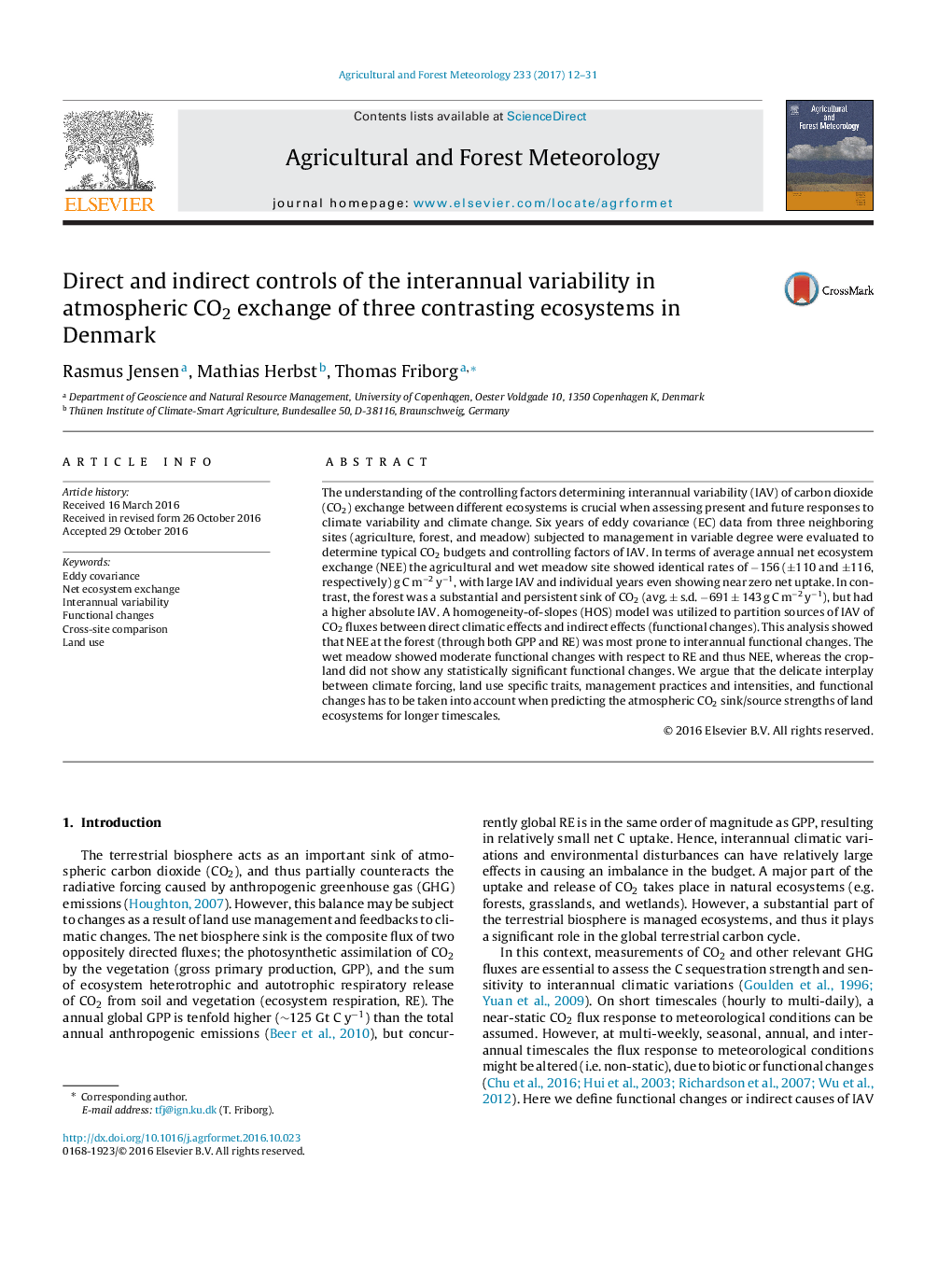| Article ID | Journal | Published Year | Pages | File Type |
|---|---|---|---|---|
| 4758948 | Agricultural and Forest Meteorology | 2017 | 20 Pages |
Abstract
The understanding of the controlling factors determining interannual variability (IAV) of carbon dioxide (CO2) exchange between different ecosystems is crucial when assessing present and future responses to climate variability and climate change. Six years of eddy covariance (EC) data from three neighboring sites (agriculture, forest, and meadow) subjected to management in variable degree were evaluated to determine typical CO2 budgets and controlling factors of IAV. In terms of average annual net ecosystem exchange (NEE) the agricultural and wet meadow site showed identical rates of â156 (±110 and ±116, respectively) g C mâ2 yâ1, with large IAV and individual years even showing near zero net uptake. In contrast, the forest was a substantial and persistent sink of CO2 (avg. ± s.d. â691 ± 143 g C mâ2 yâ1), but had a higher absolute IAV. A homogeneity-of-slopes (HOS) model was utilized to partition sources of IAV of CO2 fluxes between direct climatic effects and indirect effects (functional changes). This analysis showed that NEE at the forest (through both GPP and RE) was most prone to interannual functional changes. The wet meadow showed moderate functional changes with respect to RE and thus NEE, whereas the cropland did not show any statistically significant functional changes. We argue that the delicate interplay between climate forcing, land use specific traits, management practices and intensities, and functional changes has to be taken into account when predicting the atmospheric CO2 sink/source strengths of land ecosystems for longer timescales.
Related Topics
Physical Sciences and Engineering
Earth and Planetary Sciences
Atmospheric Science
Authors
Rasmus Jensen, Mathias Herbst, Thomas Friborg,
